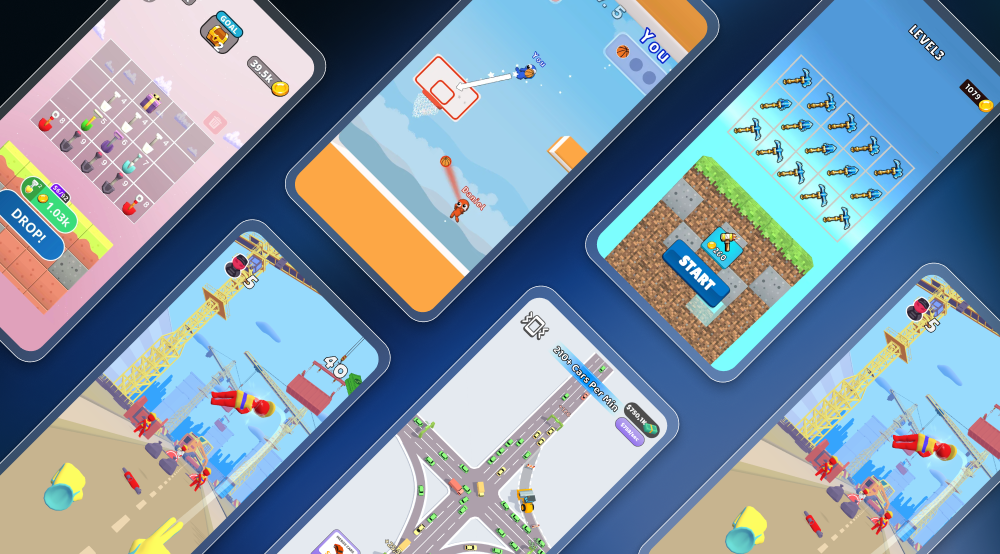Oliver Kern, Chief Commercial Officer at Lockwood Publishing, who are behind the hit mobile game Avakin Life, joins Melissa Zeloof to discuss the challenges of building a “virtual world” game (how does one integrate a live music concert from a real life pop star into a mobile game?!), how they scaled their daily active users, the metaverse, and games as the new social media.
Listen to the podcast here or scroll down to read the edited highlights.
Avakin Life
3.50: It’s a huge virtual world, we’ve grown from close to nothing to about 1.5M DAUs; people come into the game, connect with others, and express themselves -- we have a huge inventory of clothes, dance moves, houses that users can choose. Our core demographic are females between the ages of 18 and 30
Growing DAUs through community
5.45: The magic lies in building a community. Most of the top games today, those with the strongest longevity, have huge communities built around them. We have players who joined Avakin in 2013 who are still coming back to the game. We were fortunate that when we launched Avakin, there was not really a competitor in the social simulation space.
[How Avakin has built a community] Listening to users, taking their feedback seriously, and incorporating it into the game - maybe not exactly as they wish but understanding their core motivations to build a game that can be enjoyed in the long-term.
Challenges of building a social simulation game
8.23: There are lots of challenges. 1) When you start growing quickly, the main challenge is ensuring the game holds and doesn’t fall apart (from a tech standpoint). We launched in 2013 when 3G was a big thing, and we were providing a real-time multiplayer game - that still today is not easy to do. So back then it was quite ambitious. 2) Finding the balance between providing total expression and setting certain boundaries: you can’t make it too fantastical or unrealistic, otherwise it loses its attachment to the real world. You always have to look at the context to determine what works in different virtual environments. 3) Keeping the community safe and protecting users from virtual bullying is also a big priority for us.
How sophisticated are avatars?
12.10: In Avakin and real world simulation games, the avatar is very important - people usually come in looking to create a version of themselves or of a celebrity - you need to cater to that. How your avatar looks is a signal to other players in a multiplayer environment, and often determines if they want to connect with you - much like in real life.
Avakin x the metaverse
14.40: For us this is important...a digital economy where users can create a lot of the content is a route we’re exploring. Big picture, I don’t think there will be one company that has it all - a metaverse will need to allow many companies with different experiences to plug in - like APIs in some way. That’s my idea of the metaverse at least.
Live events in mobile games
16.40: This is something our audience enjoys...with Hayley Kiyoko’s concert (in October 2019) we worked with Warner Music to create a digital concert. That was pre-Covid, so musicians weren’t really thinking about virtual concerts in gaming. Since then we’ve done quite a few more with all sorts of artists and DJs. The key learning for us is that the artist needs to be super excited about the opportunity, because for us as a game - if we can tap into the artist’s audience and use them almost as an influencer - it can bring a lot of value in bringing us new users.
Live events for us are a mix of live ops and growth tools: from the live ops perspective, they are providing users new experiences all the time, giving them a reason to return to the game. At the same time, we think about ways to activate our existing community to see how they can create amazing content, and they’ve done that for instance with World of Dance where they created 20,000 videos around a certain dance style. Equally, we want the artists themselves to share content with their own audiences.
The new social media
21.20: I’ve worked in the MMO space and already there games are in a way social networks - that’s what kept and still keeps MMO games so attractive. It’s the communities that make them meaningful for decades - look at Runescapes and World of Warcraft. It’s because real people are in there and can communicate with each other and build friendships, clans and guilds - in that sense some games have always been like social media. If you look at Roblox and Fortnite, where communities stick around and you play with your friends for a long time, that is in a way a social media platform and is a competitor to the Facebooks and Instagrams of the world. Many of these games have mainly been in the male arena - whereas a game like Avakin attracts a female audience.
People come to games because of the core gameplay itself and then discover the social part of it - not necessarily the other way around. The big difference between games and social media is that in games you don’t necessarily have to be yourself - in a game you can always experiment with who you are and who you want to be.





